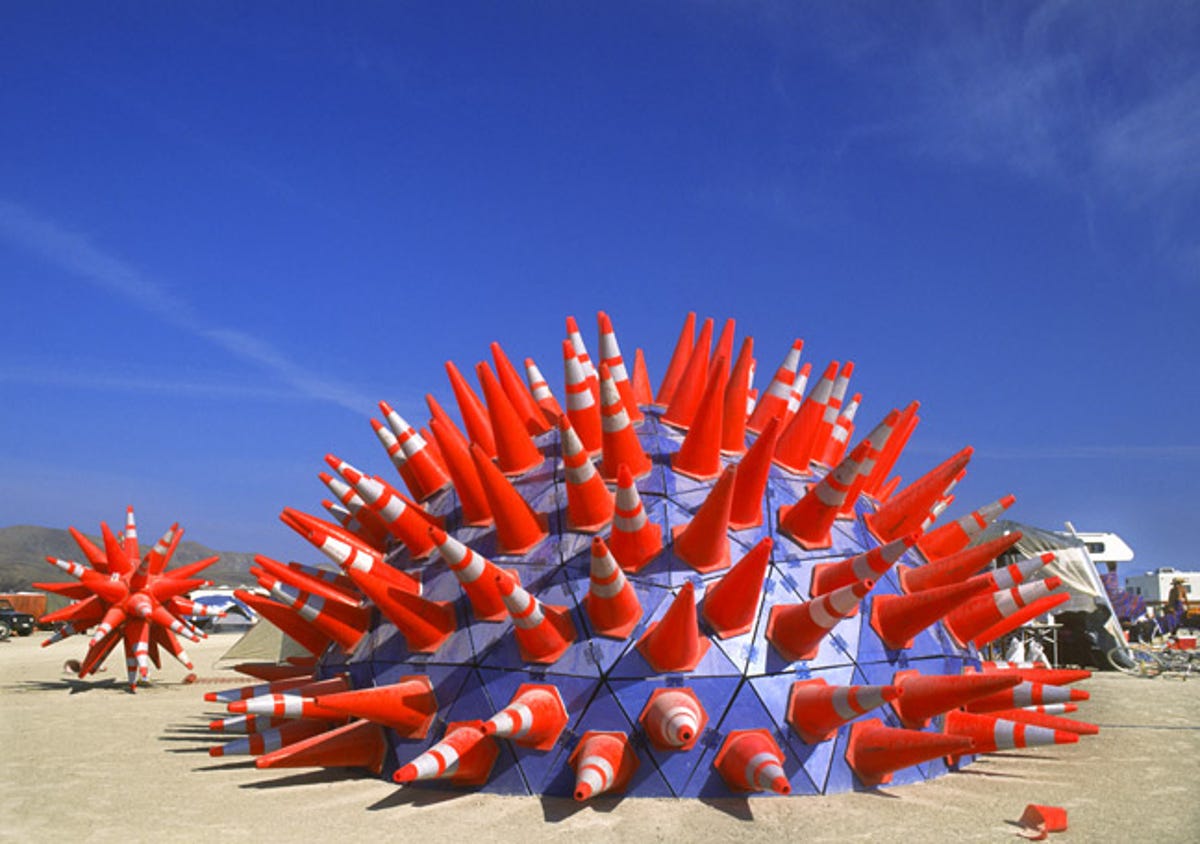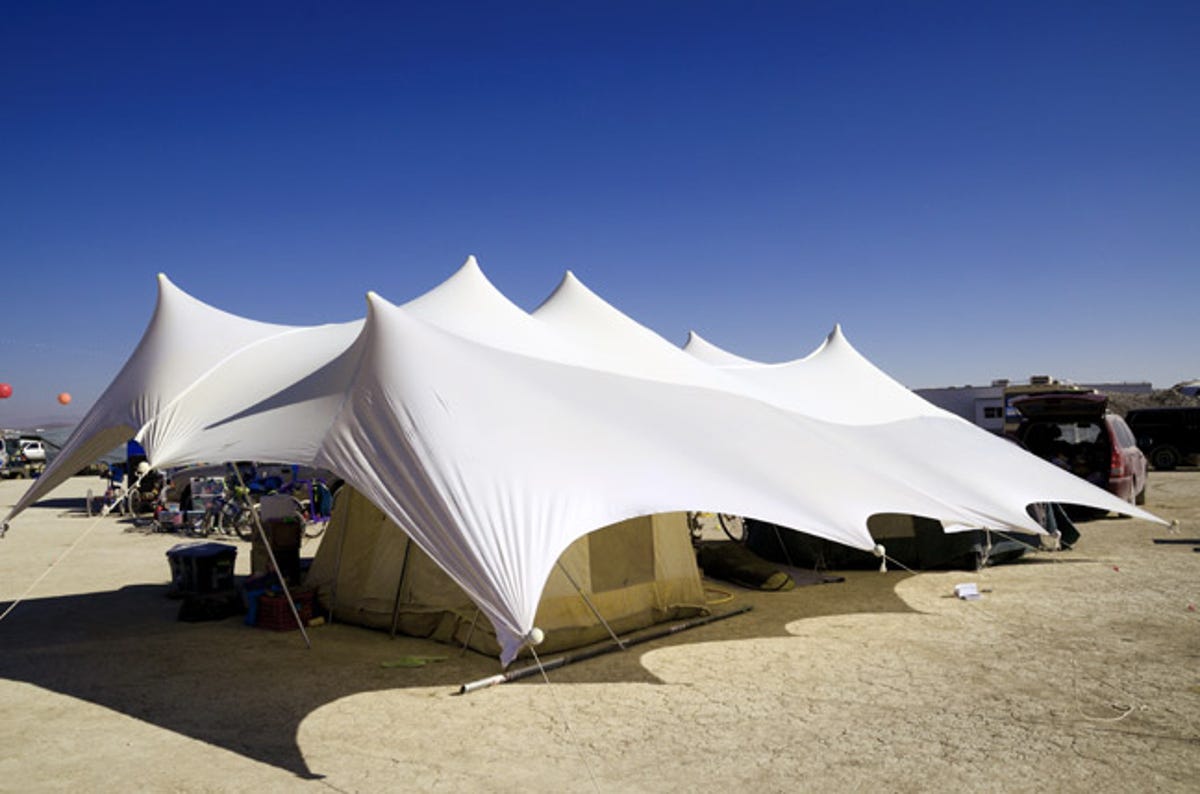High style at Burning Man: The architecture of Black Rock City
A new book from photographer Philippe Glade showcases 16 years of the best and most interesting dwellings at the popular countercultural art festival. From hexayurts to parachutes to artful carports,

Dome with cones
In his new book, "Black Rock City, NV: The Ephemeral Architecture of Burning Man," photographer Philippe Glade shows off some of the best and most interesting structures to grace the playa--the name for the Black Rock Desert, where Burning Man is held each summer--since he began attending the event in 1996. Glade told CNET that while most Burners spend their time wandering the open playa checking out art, he prefers to spend his days--and nights--walking the streets and shooting photos of the crazy places that people have built--and in which they live for a week in the desert.
These structures need to provide shelter from the brutal sun, but they also need to be able to stand up to extreme winds. Protection from hard-core dust storms is a bonus as well. And if on top of that your home can be attractive, whimsical, and comfortable, well, you might see a picture of it in Glade's new book.
This is a geodesic dome Glade photographed that's covered top to bottom in traffic cones.
Bubble dome
Tiny's Lounge Camp
Temple of Joy
Sparseland
Hammock Hangout
Monkey Hut
Icosa Village
Camouflage
The Lost Penguin
Alternative Energy Zone fabric
Center Camp Cafe
The Porch
The Enclave
The Pagoda
Square door Hexayurt
The Embassy
Bath and Bubbles


